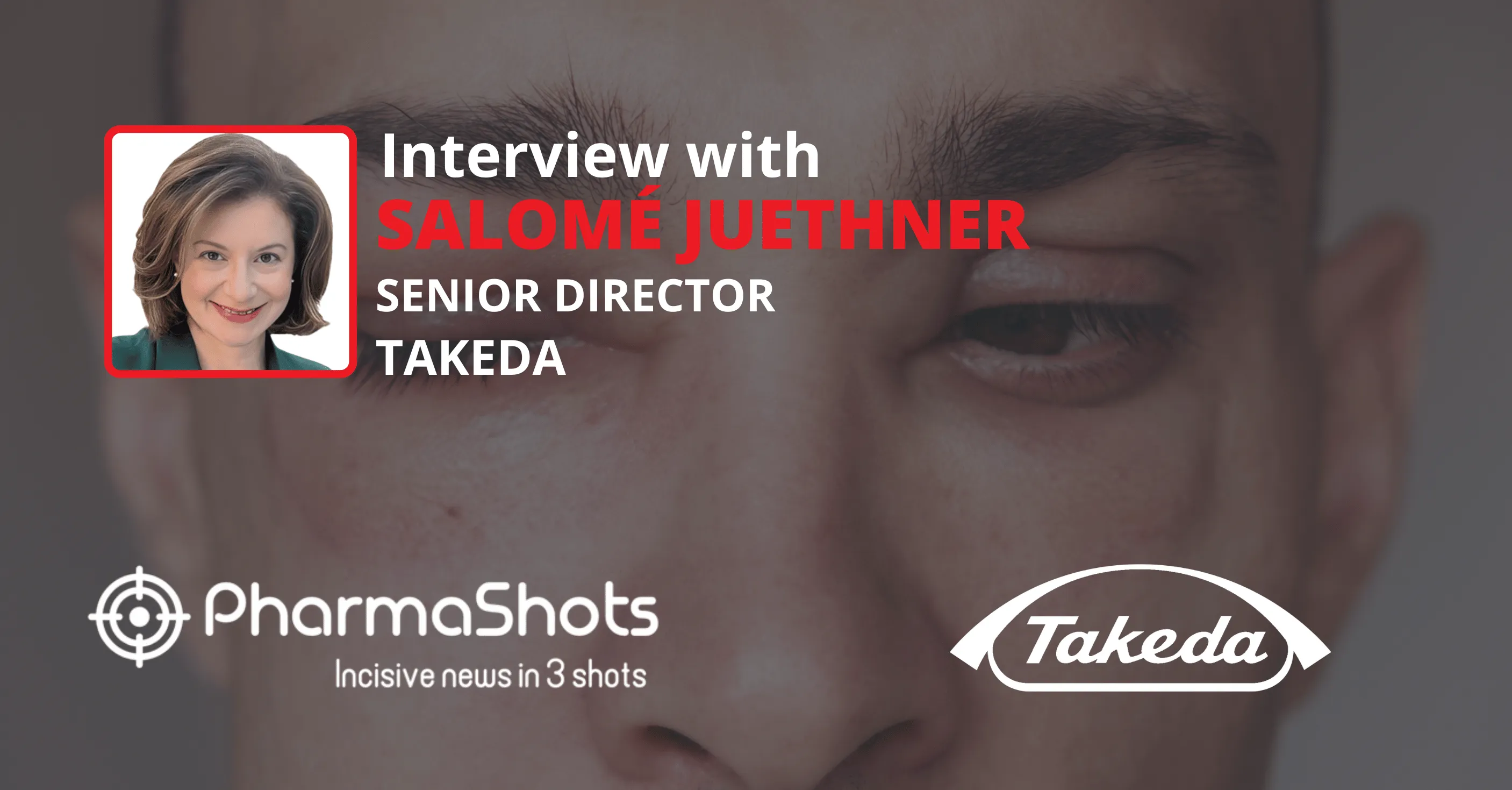
PharmaShots Interview: Amolyt Pharma's Thierry Abribat Shares Insight on AZP-3601 for Hypoparathyroidism
In an interview with PharmaShots, Thierry Abribat, Founder and Chief Executive Officer of Amolyt Pharma share his views on the clinical profile of AZP-3601. He also shed light on how it differs from other treatments in development for hypoparathyroidism.
Shots:
- Amolyt Pharma presented positive data from the single ascending dose (SAD) portion of its Ph1 study evaluating AZP-3601 for hypoparathyroidism
- AZP-3601 is a therapeutic peptide analog of the parathyroid hormone (PTH) designed to target a specific configuration of the PTH receptor (PTHR), to have a short half-life, and produce a long pharmacodynamic effect.
- AZP-3601 is formulated as a once-daily SC injection, while the company is currently developing a multi-dose pen device intended to make self-administration by patients easier and more comfortable. The US FDA has granted ODD to AZP-3601 in Jan'2021
Tuba: How was your virtual experience of presenting a poster at ENDO 2021?
Thierry: We were thrilled to participate in the virtual ENDO 2021 conference and were delighted to share several updates re our programs, and in particular the first set of clinical data highlighting our lead program AZP-3601's unique mechanism of action during the conference.
Tuba: Discuss the clinical profile of AZP-3601 and how it differs from other treatments in development for hypoparathyroidism.

Source: Amolyt Pharma
Thierry: AZP-3601 is a therapeutic peptide analog of the parathyroid hormone (PTH) designed to target a specific configuration of the PTH receptor (PTHR), to have a short half-life and to produce a long pharmacodynamic effect. This particular profile is intended to produce sustained normal levels of calcium in the blood and thereby mitigate some of the numerous and life-altering symptoms of hypoparathyroidism.
AZP-3601 may also decrease hypercalciuria, which would in turn aid in preventing long-term complications such as chronic kidney disease, which is commonly seen when calcium and vitamin D supplementation are used to treat hypoparathyroidism. In addition, AZP-3601 is expected to have a neutral effect on the bone, which would potentially be a key advantage, since a high percentage of women with hypoparathyroidism are middle-aged women at risk of developing osteoporosis, a condition characterized by weak and brittle bones.
This specific mode of action and profile has been demonstrated in pre-clinical studies, and we are now starting to confirm these findings in humans, starting with healthy volunteers and then moving to hypoparathyroidism patients.
Tuba: Highlight the key findings of the data presented at ENDO 2021.
Thierry: We presented positive data from the single ascending dose (SAD) portion of our Phase 1 trial evaluating our lead clinical candidate, AZP-3601.
In the first four cohorts of the SAD, double-blind trial, in healthy volunteers aged 18-60 years, AZP-3601 treatment produced a clear, dose-dependent increase in the average blood calcium levels, adjusted for albumin levels, as compared with placebo controls. In healthy volunteers who received 40 micrograms of AZP-3601, the highest dose for which we have reported data so far, average albumin-adjusted blood calcium levels were significantly increased, but stayed within normal laboratory range, and remained elevated through at least 24 hours post-administration. As expected, a dose-dependent decrease in the level of endogenous PTH was also observed, correlating with the increased calcium level.
These data provide initial clinical evidence that AZP-3601 may lead to a long-acting response following a single administration, even after AZP-3601 is rapidly cleared from the body. We believe the quick clearance of AZP-3601 from the body is ideal for patients with hypoparathyroidism because constant exposure of the PTHR to natural PTH has been linked to a decrease in bone mineral density, a potential risk for the majority of patients with hypoparathyroidism, who are middle-aged women at risk of osteoporosis.
Tuba: Discuss the design of the P-I trial to assess AZP-3601 for hypoparathyroidism.
Thierry: The ongoing Phase 1 clinical trial is designed to evaluate the safety, tolerability, pharmacokinetics, pharmacodynamics, and preliminary efficacy of AZP-3601 following single and multiple ascending doses (MAD) in healthy subjects, as well as in patients with hypoparathyroidism.
We expect to enroll around 130 subjects in this trial and anticipate completion of both the SAD and MAD portions of the trial in healthy subjects in mid-2021. We expect the results of the MAD trial in patients will be available in the first half of 2022
Tuba: Can you shed some light on the unique mechanism of AZP-3601, its RoA, formulation and other details?
Thierry: AZP-3601 is the first PTH analog designed to preferentially target the Rº configuration of the PTH receptor to stimulate calcium reabsorption by the kidneys to restore and maintain sCa level within the normal range and to prevent hypercalciuria and chronic kidney disease. Pre-clinical data demonstrated that thanks to its short half-life, AZP-3601 doesn't continuously activate the RG configuration of the PTH1 receptor, which may, in turn, reduce the risk of bone resorption linked to continuously elevated levels of PTH.
AZP-3601 is formulated as a once-daily subcutaneous injection, and we are also currently developing a multi-dose pen device intended to make self-administration by patients easier and more comfortable.
The U.S. Food and Drug Administration granted Orphan Drug Designation to AZP-3601 in January 2021.
Tuba: Discuss the symptoms, causes, diagnosis and pathophysiology of Hypoparathyroidism.
Thierry: Hypoparathyroidism is a rare endocrine disorder that is characterized by a deficiency in PTH resulting in dysregulation of calcium and phosphorus, two essential minerals in the body.
There are approximately 80,000 and 110,000 people with hypoparathyroidism in the United States and European Union, respectively, of which about 80% are women. More than two-thirds of women with hypoparathyroidism are peri- and menopausal women who are at an increased risk of developing osteoporosis. It is estimated that about 25% of people with hypoparathyroidism have chronic kidney disease or kidney failure, highlighting the importance of reducing urinary calcium excretion as a key treatment goal.
Most cases of hypoparathyroidism are due to damage or removal of the parathyroid glands during thyroid surgery, but hypoparathyroidism may also be inherited or due to an immune system problem or an unknown cause. Regardless of the underlying cause, any patient with hypoparathyroidism may experience numerous symptoms.1,[1]
Clinical manifestations of hypoparathyroidism vary and impact a large number of tissues and organ systems, including the muscles, brain, heart, and kidneys. Despite available treatments, patients frequently experience persistent, life-altering symptoms and reduced quality of life. In addition, they often develop kidney disease and have abnormal bone architecture.
Tuba: What are the different programs targeting different diseases in your portfolio?

Source: Amolyt Pharma
Thierry: In addition to AZP-3601, our pipeline includes AZP-38XX and AZP-3404.
In collaboration with PeptiDream Inc., through our AZP-38XX program, we are testing a series of novel, small peptide antagonists of the growth hormone receptor to select a lead development candidate for the potential treatment of acromegaly.
In parallel, we are exploring the pharmacology and potential target indications for AZP-3404, a therapeutic peptide that may restore fat and glucose metabolism in the body.
Tuba: What are the limitations for the current treatment of hypoparathyroidism? How may AZP-3601 overcome them?
Thierry: Conventional therapies for patients with hypoparathyroidism include calcium supplements and activated vitamin D in the form of calcitriol, ergocalciferol or cholecalciferol in the United States or alpha calcidol in the European Union. This treatment regimen has limited efficacy and requires multiple daily doses that can lead to compliance issues. Long-term treatment with these therapies may lead to dangerously high levels of calcium in the urine causing kidney stones and impaired kidney function.
Recombinant human PTH [(1-84) [rhPTH (1-84)] is a once-daily injection under the skin that is also approved as a treatment for adult patients with hypoparathyroidism who do not respond to conventional therapies, but, due to its short pharmacokinetic and pharmacodynamic profile, it typically fails to regulate levels of calcium in the body for 24 hours, resulting in poor symptom control. It also has a very limited effect on urine calcium excretion.
Therapies that adequately regulate blood calcium levels over twenty-four hours to control symptoms, avoid elevated urine calcium levels to prevent kidney disease, and maintain bone integrity are urgently needed to restore quality of life for patients with hypoparathyroidism.
Tuba: What next can we expect from Amolyt Pharma to potentially improve the lives of patients with hypoparathyroidism?
Thierry: We are pursuing an ambitious Phase I program with the goals of demonstrating proof-of-concept and rapidly advancing AZP-3601 for the potential treatment of patients with hypoparathyroidism. We are encouraged by the early results presented at ENDO 2021, and we look forward to reporting additional data from the multiple ascending dose portion of the trial in healthy subjects later this year and in the first half of 2022 for the MAD study in patients.
References:
[1] Shoback DM, et al. Presentation of hypoparathyroidism: etiologies and clinical features. J Clin Endocrinol Metab. 2016 Jun;101:2300-12.
About Author:

Thierry Abribat is a biotech entrepreneur who has founded and managed three biotech companies, one of which, Alizé Pharma 2, was acquired by Jazz Pharmaceuticals and, another, Alizé Pharma, was acquired by Millendo Therapeutics. He holds a Doctor of Veterinary Medicine and a Ph.D. from the National Polytechnic Institute of Toulouse.

This content piece was prepared by our former Senior Editor. She had expertise in life science research and was an avid reader. For any query reach out to us at connect@pharmashots.com













